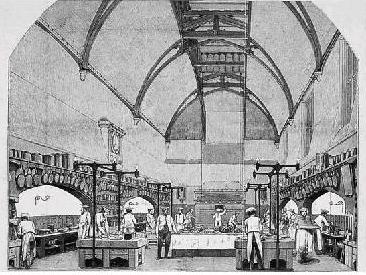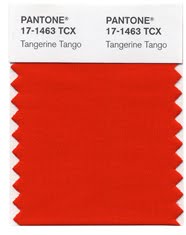March 10th, 2012 — cabinets, design, hoods, kitchen, steel
I’m all for modern kitchens, but sometimes something different makes all the difference. So if you prefer something a little more vintage instead of modern, these kitchen remodeling designs are for you.
There’s something about vintage kitchen remodeling designs that can’t be defined and yet it’s there. Just take a look at these ideas from Marchi Group related to vintage kitchens.

Continue reading →
February 14th, 2012 — cabinets, design, layout
When you think kitchen, you think base cabinets and upper cabinets, set nicely against a wall. While it’s by far the most common – and the most practical too – how else you could configure a kitchen? Well, let’s put it into the middle of a larger space.  The Origami-Mi Kitchen  incorporate three, two or one spatial dividers, all dedicated to create an area ideal for cooking.
The basis of kitchen unit is a frame made of metal tube on which are mounted boxes. The frame allows the kitchen units exist independently from the wall. For the production of fronts the manufacturer uses sandwich panels. The boxes (or drawers…) open by an electric “servo-drive”, you just lightly press the front and even a fully loaded drawer will open.
 Continue reading →
Continue reading →
February 6th, 2012 — cabinets, compact, design, dishwasher, hoods, kitchen
Space is something you cannot get enough of – especially in the kitchen, where things are usually super-crammed. So here’s your challenge: fit a compact yet complete kitchen into one square meter when it’s closed up.
In order to keep all sort of pests out of the kitchen area is to get rid if their access to food and water sources, as this is what fuels them to survive and reproduce. If you want a longer-term solution then of course your best bet will be to hire professionals at https://www.pestcontrolexperts.com/local/kansas/. It’s also best to start practicing cleaning in the kitchen. You may also consider hiring a professional cleaning service like Arbor Trail Cleaning to help you clean your kitchen. Try to wipe up all crumbs and spills on the floor, kitchen counters, cabinets and refrigerator in a timely manner. If you need an expert to assist you on this fight, fin the help you need at Pest Control Kings | PCK. You should keep the kitchen, and enough storage to cook and clean up easily for which we also recommend the use of pest control services too. Did you know the pest infestations can affect your health significantly?
This will keep your surfaces free, which means you can use products like the 32 oz RTU Spray 6 Pack to clean them faster and with much less hassle. You don’t need me to tell you, you want to keep your kitchen as clean as possible at all times, read about the cost to spray upvc. If you want to install custom cabinets and shelves in your home, you may consider hiring a Closet Designer.
Here’s how design students Kristin Laass and Norman Ebelt made it work. Their quite brilliant solution, to accommodate all the various ways that we use the kitchen was one of the entries in the DMY international design festival berlin 2010.

Continue reading →
January 26th, 2012 — accessories, accessories, kitchen, steel
Gas cookers were invented in the first decade of the nine-teenth century but were not in general use until 1850. At firs tthey were regarded with great suspicion – people fearedexplosions, poisoning or food tasting of gas.
To begin withthey were used in hotels and institutions, but it was not until 1924 that an oven regulator or thermostat appeared which made possible, for the first time, the accurate control of the temperature of the oven. The other great advantage was thatthe gas cooker did not need a flue, so could be placed anywhere within a room, even in a room without a fireplace.

Continue reading →
January 18th, 2012 — cabinets, compact, design, kitchen, kitchen island, steel
With the b2 kitchen workshop, 1German kitchen manufacturer bulthaup has radically rethought the concept of the kitchen. Starting from the  origins of every living space “ fire and water “ the company has created an open and mobile kitchen that can be added to and composed to suit each individual personal requirements.
The new group of elements is the logical continuation of the kitchen workbench and defines the kitchen workshop in its original meaning “ comprising a workbench, kitchen tool cabinet and appliance housing cabinet. Check this new explanation on global payroll terms.
The three main elements: a workbench housing the sink and cooker, ˜tool cabinet for utensils, crockery and food, and appliance cabinet for the oven, dishwasher and fridge.

Continue reading →
January 6th, 2012 — design, hoods, kitchen, layout, planning
The Victorians still thought it desirable to keep the kitchen, with its attendant smells, well away from the gentry end of the house. In grand homes which may have utilized services like https://planetroof.com, kitchens were positioned in the centre of the servants’ wing, surrounded by the smaller rooms of the scullery, larder and pantry with separate stores for game, fish, ice and coal. These would be adjacent to the servants’ hall with separate rooms for the cook, butler and housekeeper

The importance of the house could be judged by the number of chefs presiding over numerous kitchen maids. Kitchens were full of cooking devices such as roasting ranges, stewing and boiling stoves, turnspits and hot cupboards. However, there were no mechanised devices for washing, ventilation or refrigeration. Water was pumped by hand into scullery sinks and food was kept cool in an ice box with ice brought in from an ice house outside. Most food was still kept in north facing larders with natural ventilation.
The big change in kitchen design came about due to the social implications of the industrial revolution and the development of mechanisation. Continue reading →
December 22nd, 2011 — cabinets, compact, design, dishwasher, kitchen, kitchen island
As Miele kitchens rebrands itself and takes the name of the town in which the company is based – Warendorf – it is marking this change with a new kitchen. They’ve chosen one of the biggest names in design, no less than Philippe Starck to develop the first kitchen under the new brand.
Starck has created a kitchen design that represents something of a departure, both emotionally and functionally, from the traditional wall-to-wall arrangement of fitted kitchens. He calls the concept “democratic design†because its wide range of individual elements and the ability to combine them in different ways gives it potentially wide appeal to a range of consumers, lifestyles and spaces.
 Continue reading →
Continue reading →
December 21st, 2011 — design
Fuel
Timber, preferably hardwood, was burnt on the fires, while the poor used dried dung and peat. In the sixteenth century, wood became scarce and seacole came into general domestic use. It was called ‘seacole’ because it was brought to London and the east coast towns by boat from the open cast pits in Durham and Northumberland. Coal cannot be burnt directly on a hearth, so the basket grate was developed to hold the coals.
Early ovens
The first ovens were spaces made under brick or stone hearths, but they were soon moved into the return side walls of the open fireplace. These ovens, which can still be found in old cottages, were to bake bread. A fire was made inside using faggots and the door left ajar to allow the smoke to escape up the chimney over the adjacent fire. When the brick-lined oven was hot enough, the ashes were raked out and the loaves baked in the residual heat. You can try this website if you need any help if you are hesitant and don’t know what to do.
Continue reading →
December 19th, 2011 — design, planning
Designing kitchens necessitates the integration of functional requirements, together with spaces which are pleasant to work in. Before analysing these needs it is worth looking back in time to see the antecedents of the modern kitchen. This will help to articulate and clarify the different activities needed to prepare complex meals and to realise how radically modern technology has reduced both the space and manpower needed to achieve this.
Early kitchens
The earliest kitchens, all over the world, are simply open fires, most often out of doors which is still so today in countries with a climate hot enough all the year round to make this possible.

In Britain, little is known about kitchens until Norman times. After the Romans left Britain in AD 407, the culinary arts were largely forgotten. Food was often cooked outdoors on caul- drons or spits. This was to avoid the risk of fire and to keep smells out of the houses.
Continue reading →
December 18th, 2011 — color, design
As kitchens more and more the central place in the home (just as it was for hundreds of years, before the television), they’re taking on more vibrant, energetic colors. Sure there are a few classics that are well-established as such for a reason, for example an appealing hardwood floor installation for a kitchen will never go away- it goes great with anything. As for the rest of the kitchen, more and more you’ll find that options for kitchen supplies are as varied as they can be.
The kitchen is absolutely a key place for color, says Leatrice Eiseman, executive director of the Pantone Color Institute, one of the premier color forecasters in the country. “It’s the place where people gather, so it’s apt to have some mixing and matching of colors to create high energy.”
2012 Color of the Year: Tangerine Tango

Since most appliances are basic black, white or silver, you need bursts of color on other places. “Most kitchens have minimal wall space, so it’s a good place to splash some bold color and make a statement without overpowering the room,” says designer Jamie Drake, author of New American Glamour, whose clients include Madonna and New York City Mayor Michael Bloomberg.
We’re seeing bolder colors that complement stainless steel, as well as the darker cabinet colors that are in style,
explains Becky Ralich Spak, senior designer at Sherwin Williams. “Aztec clay colors ” such as copper, henna and ginger as well as gold tones, are popular options.” Continue reading →











